“As you enter the cabin, I would like you to tell me at least one thing you learned about snakes during Snake class tonight,” I tell my students.
Answers vary between each student, but a common answer is that snakes have infrared vision. What is this magical and natural ability?
 Infrared sensing is the ability to detect infrared wavelengths through the use of specialized pits located on the snake’s face. Not all snakes have this adaptation though. It is found in pit vipers, some boas, and some pythons.1 Let’s take a look at why this adaptation is useful and how these species are able to sense these wavelengths.
Infrared sensing is the ability to detect infrared wavelengths through the use of specialized pits located on the snake’s face. Not all snakes have this adaptation though. It is found in pit vipers, some boas, and some pythons.1 Let’s take a look at why this adaptation is useful and how these species are able to sense these wavelengths.
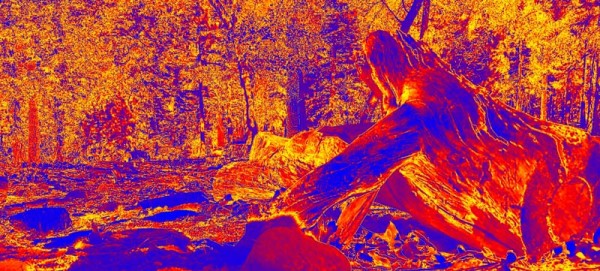
Why is infrared sensing useful?
Infrared sensing allows snakes to tell the difference between objects in their environment. This is particularly useful for detecting prey and hunting, especially at night. Nocturnal snakes have adaptations to help with seeing in the visible spectrum at night, but pit organs allow them to sense the heat from prey that the snake is hunting.
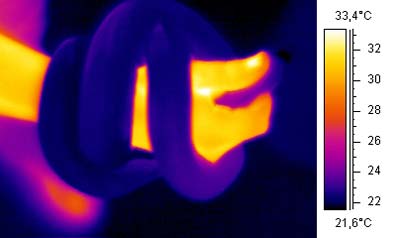
The human hand is hot while holding a cold snake.
Since the snake is able to detect such small differences, the prey could be warmer or cooler than the environment and the snake would still be able to sense it with its pit organs. The snake can also track moving prey as the ground is warmed by the prey’s body and feet as it moves.
This adaptation is also useful to be aware of predators in the area that the snake wants to avoid or move away from. It can also give the snake a better view of the surrounding environment so that it can safely move about its environment, find warm areas to use to increase body temperature, or find a den or hiding spot.
How are snakes able to sense infrared wavelengths?
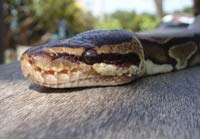 This adaptation is often referred to as infrared vision, but this sense is separate from the snake’s eye. The snake’s brain is able to combine information from both types of vision to form an image of its surroundings. The snake’s eyeball is used to sense visible light and the snake has a pit organ that absorbs infrared radiation.
This adaptation is often referred to as infrared vision, but this sense is separate from the snake’s eye. The snake’s brain is able to combine information from both types of vision to form an image of its surroundings. The snake’s eyeball is used to sense visible light and the snake has a pit organ that absorbs infrared radiation.
Infrared radiation has a longer wavelength than visible light. On the electromagnetic spectrum, as seen in the figure below, infrared radiation is between the visible spectrum and radar with a wavelength between 700 nanometers and 1000 nanometers. Snakes are able to detect very slight differences in infrared radiation in order to tell the difference between the environment, their own body temperature, and living things surrounding them.
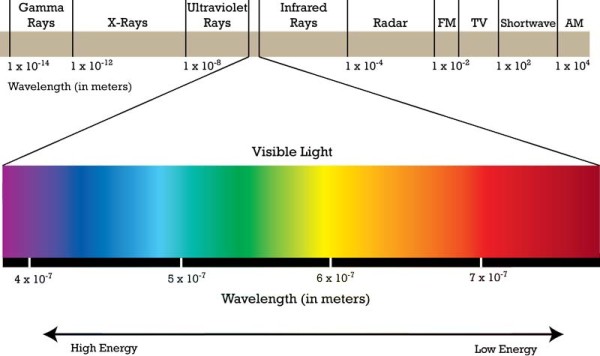 There are two possible types of pit organs that a snake can have, loreal pits or labial pits. Loreal pits are found in pit vipers. These are two separate pits, one on each side of the face, found between the eye and nose. Labial pits are found in boas and pythons. Boas and pythons can have up to 13 pairs of these pits around their upper or lower jaw 2
There are two possible types of pit organs that a snake can have, loreal pits or labial pits. Loreal pits are found in pit vipers. These are two separate pits, one on each side of the face, found between the eye and nose. Labial pits are found in boas and pythons. Boas and pythons can have up to 13 pairs of these pits around their upper or lower jaw 2
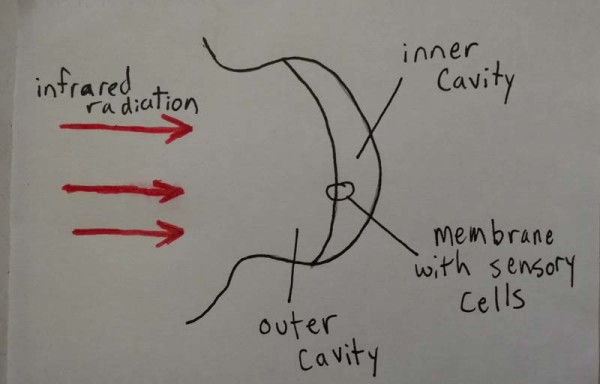 Loreal and labial pits operate in a similar fashion. Each pit has an outer and inner cavity that are separated by a membrane. This membrane has sensory cells that are stimulated by infrared radiation and send this information to a part of the brain called the optic tectum. The optic tectum receives and integrates information from the snake’s pit organs and eyes. 3 Combining this information gives the snake a detailed view of its surroundings which can be useful in many ways.
Loreal and labial pits operate in a similar fashion. Each pit has an outer and inner cavity that are separated by a membrane. This membrane has sensory cells that are stimulated by infrared radiation and send this information to a part of the brain called the optic tectum. The optic tectum receives and integrates information from the snake’s pit organs and eyes. 3 Combining this information gives the snake a detailed view of its surroundings which can be useful in many ways.
Some animal species that are hunted by snakes with infrared sensing have adaptations of their own to try to protect themselves. For example, the California ground squirrel uses a behavior referred to as tail flagging when it encounters a snake. Tail flagging is when the squirrel shakes its tail back and forth as a way to intimidate the snake. California ground squirrels modify their tail flagging depending on if it is a snake species with infrared sensing capabilities. If the snake has infrared sensing capabilities, such as the western diamondback rattlesnake, researchers found that the squirrel will send blood into its tail while tail flagging resulting in the snake responding with defensive behaviors rather than predatory. 4
Infrared sensing is just one of the many fascinating adaptations found in nature that is discussed here at High Trails. It is one way for students to learn how species have evolved multiple ways to interact with and observe the world around them to aid in their survival.

At High Trails Outdoor Science School, we literally force our instructors to write about elementary outdoor education, teaching outside, learning outside, our dirty classroom (the forest…gosh), environmental science, outdoor science, and all other tree hugging student and kid loving things that keep us engaged, passionate, driven, loving our job, digging our life, and spreading the word to anyone whose attention we can hold for long enough to actually make it through reading this entire sentence. Whew…. www.dirtyclassroom.com
- Infrared detection in snakes-http://www.mapoflife.org/topics/topic_312_infrared-detection-in-snakes/ ↩
- Snakes’ heat vision enables accurate attacks on prey-http://phys.org/news/2006-08-snakes-vision-enables-accurate-prey.html ↩
- Biological infrared imaging and sensing-http://citeseerx.ist.psu.edu/viewdoc/download?doi=10.1.1.403.7731&rep=rep1&type=pdf ↩
- Ground squirrels use an infrared signal to deter rattlesnake predation-http://www.pnas.org/content/104/36/14372.abstract ↩

Comments are closed.